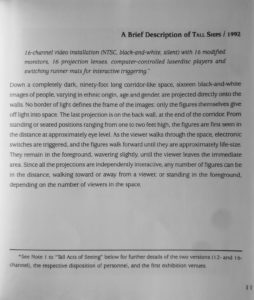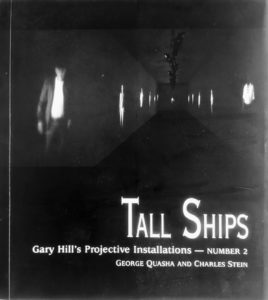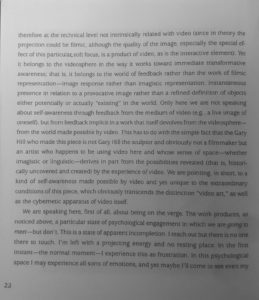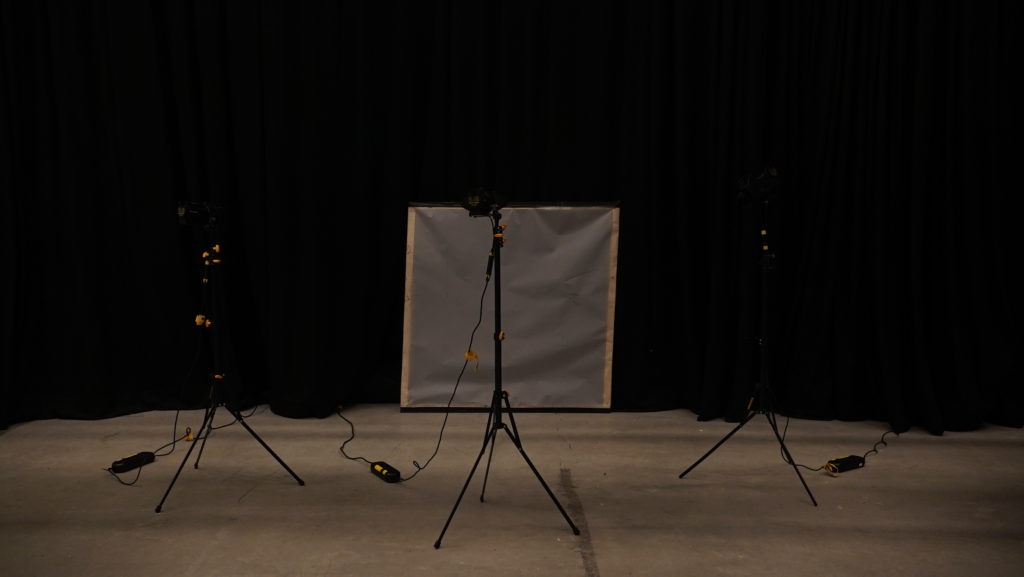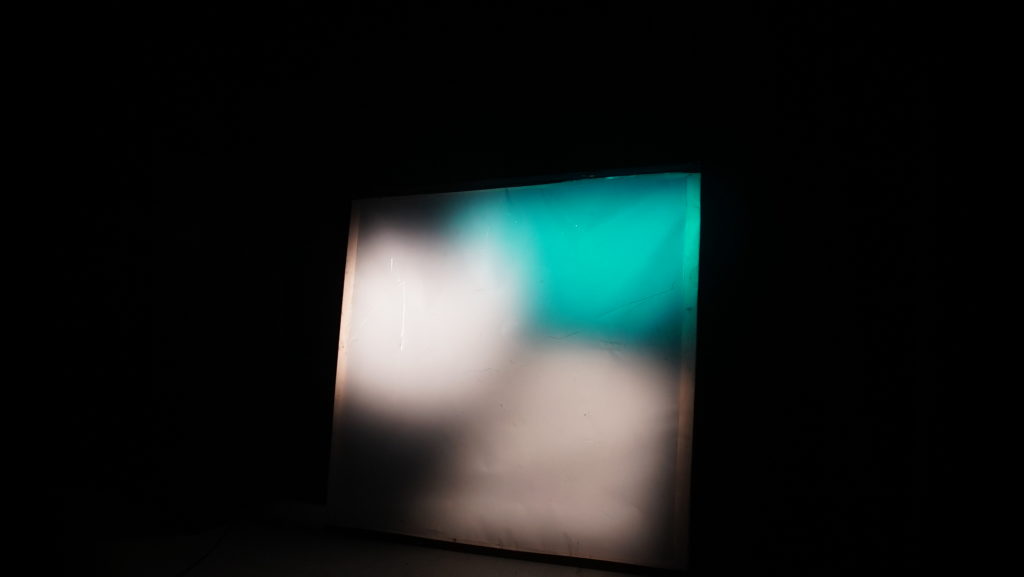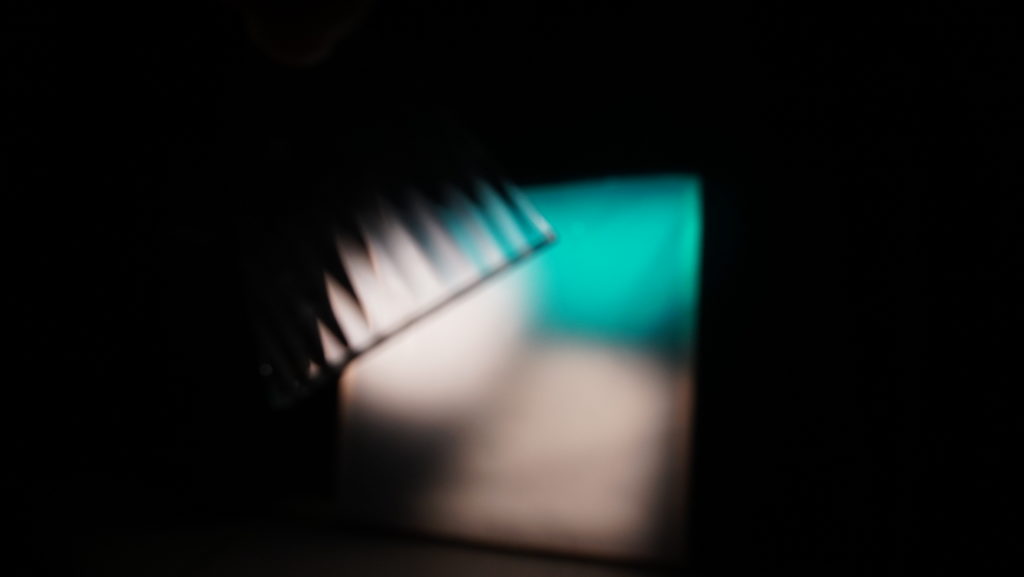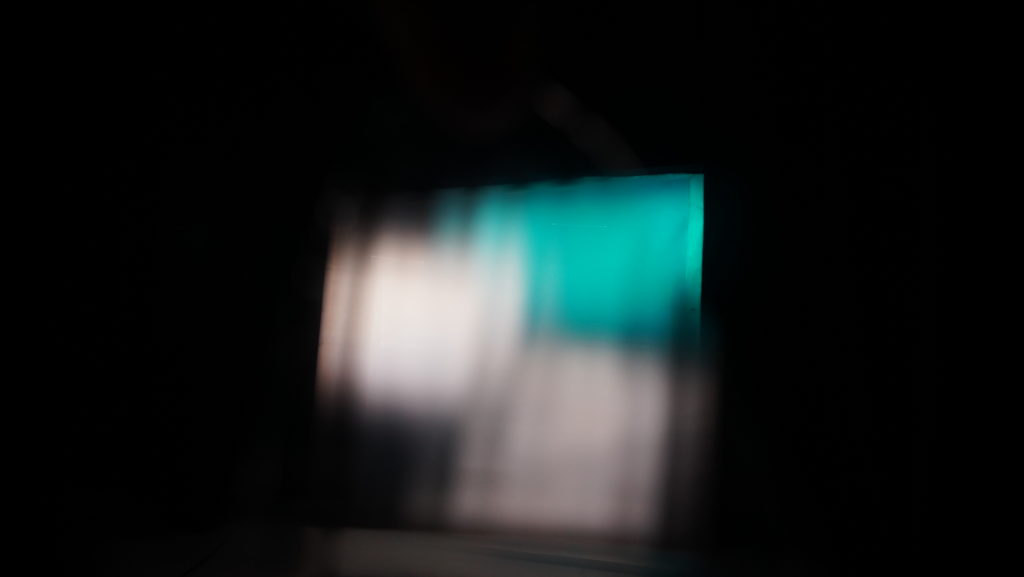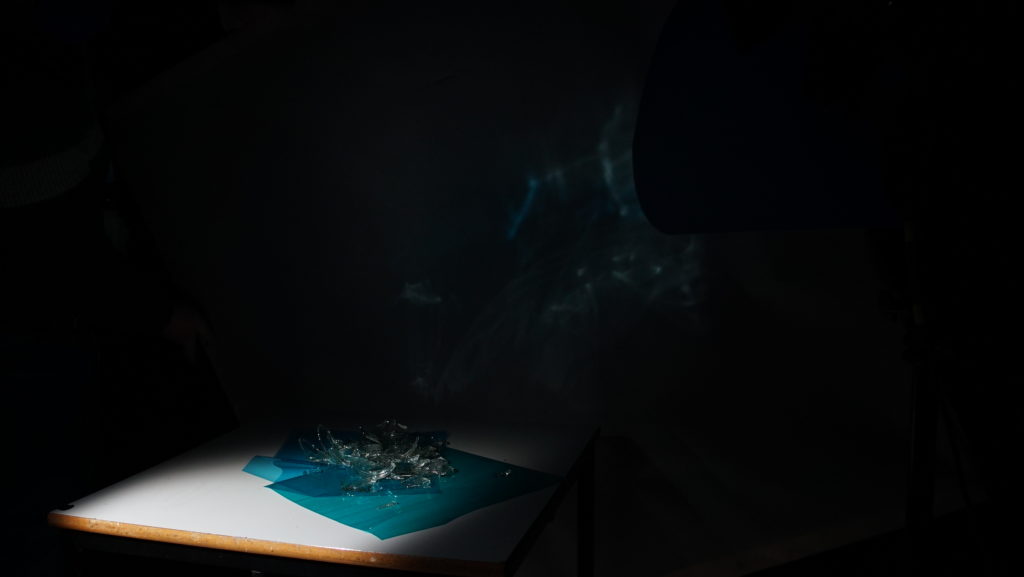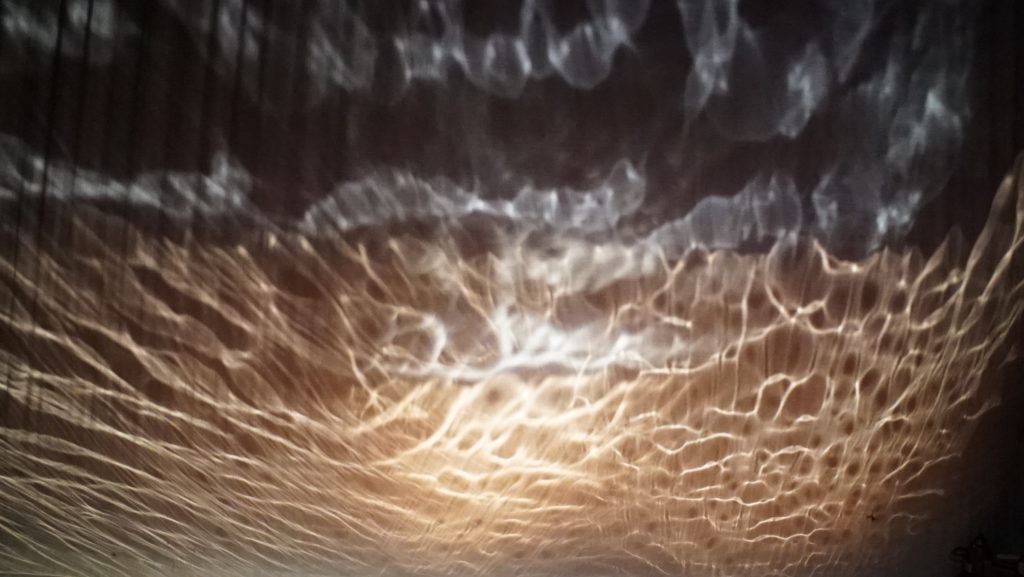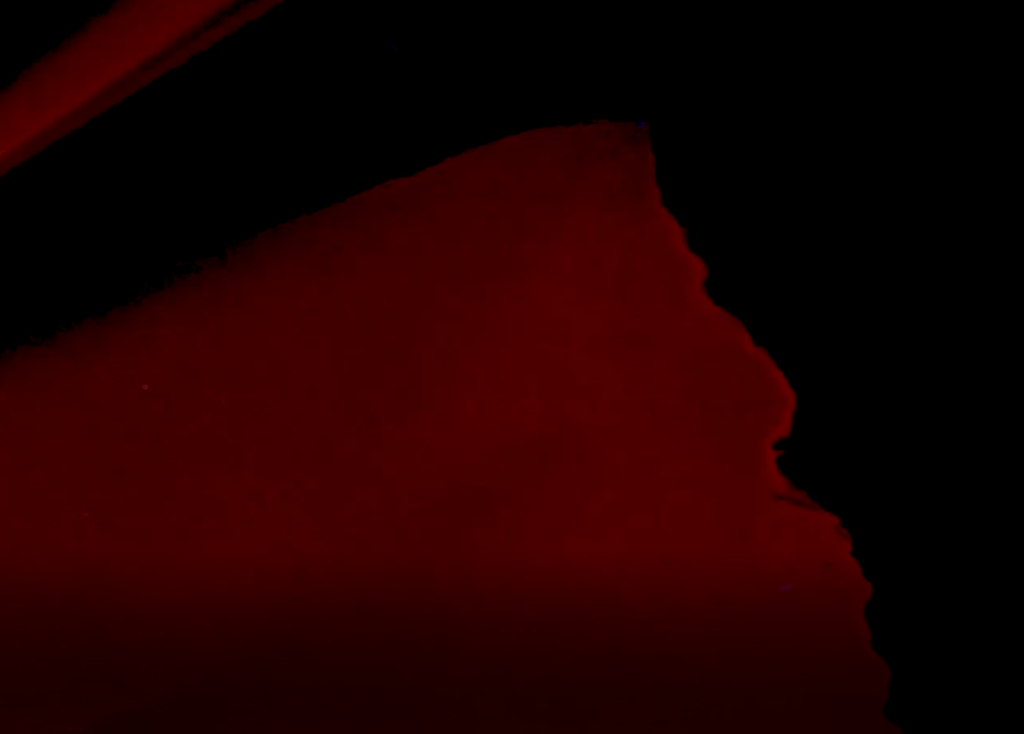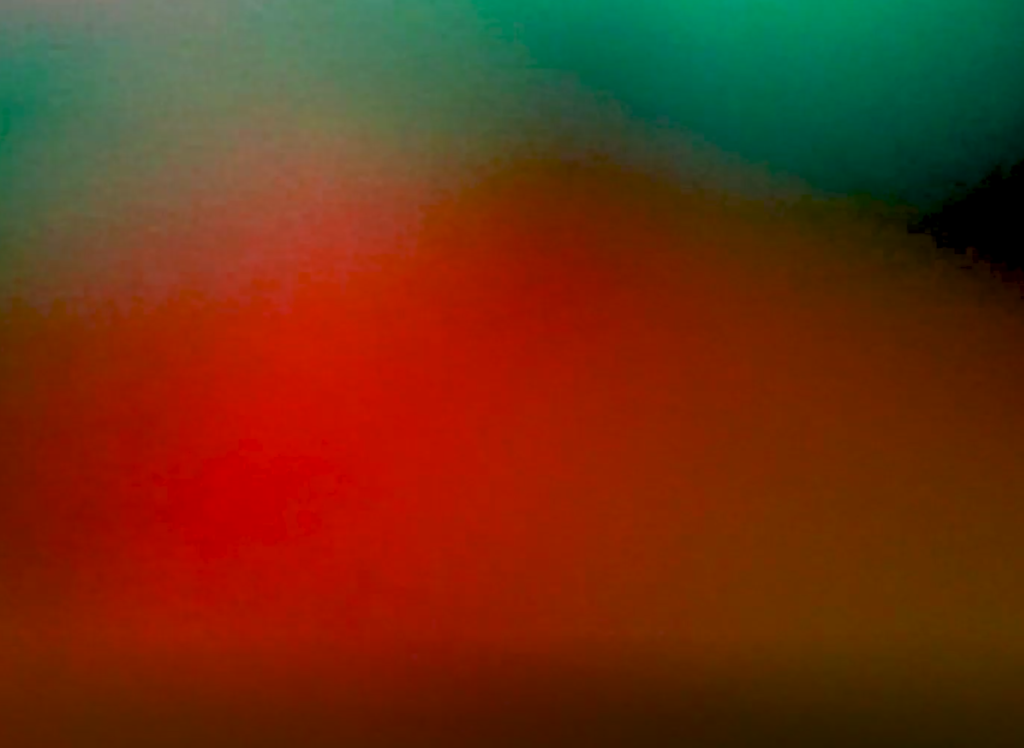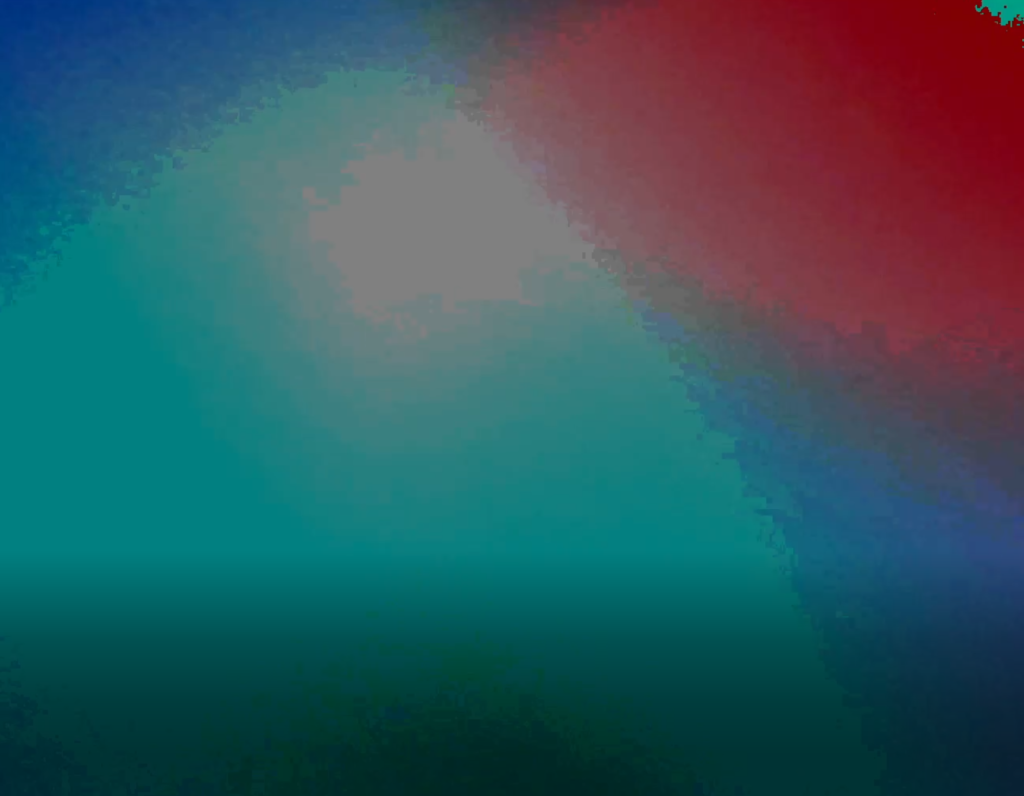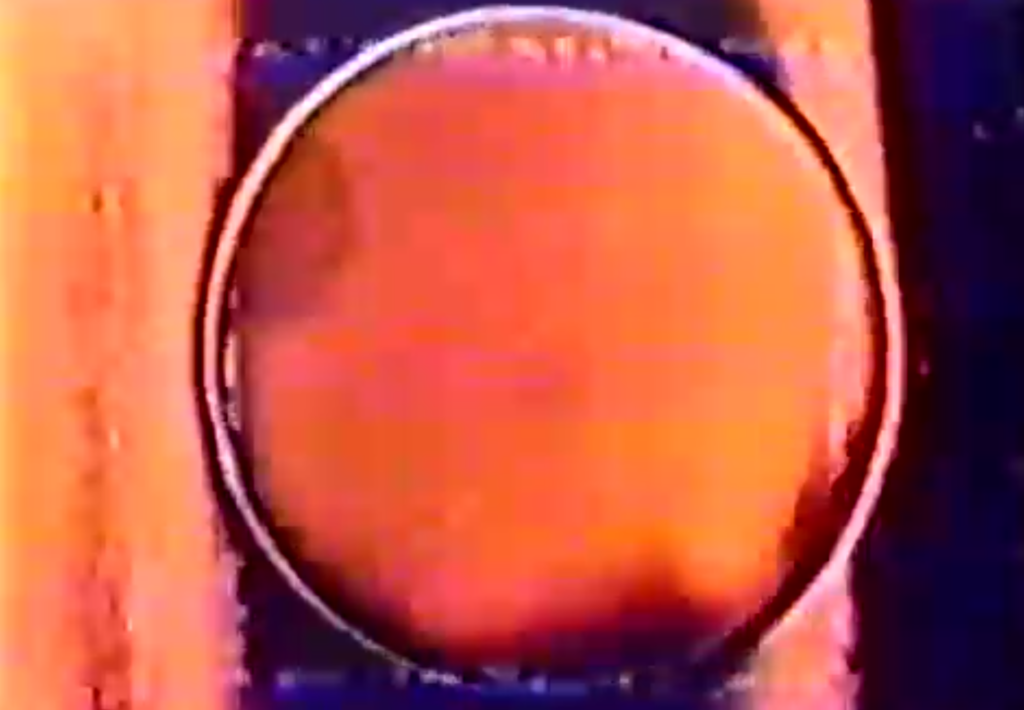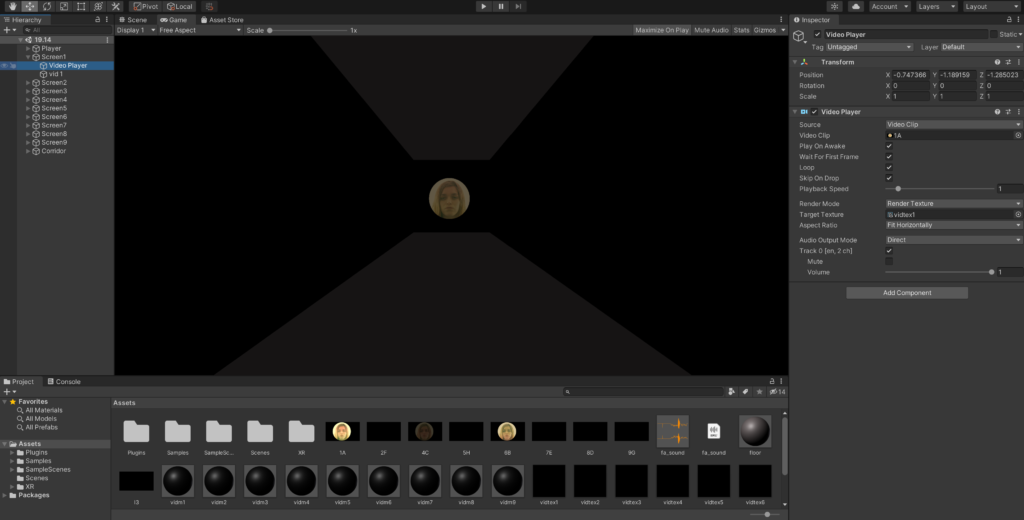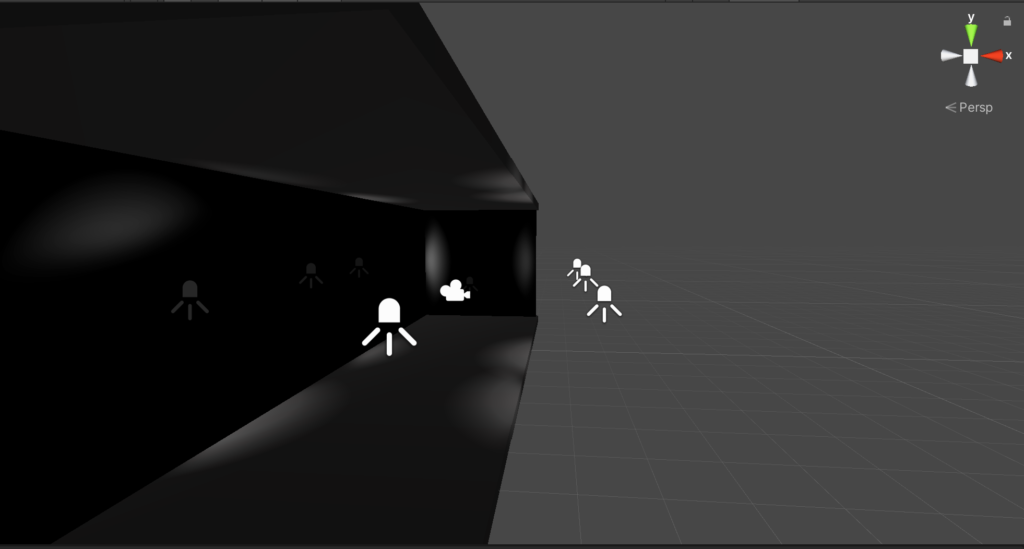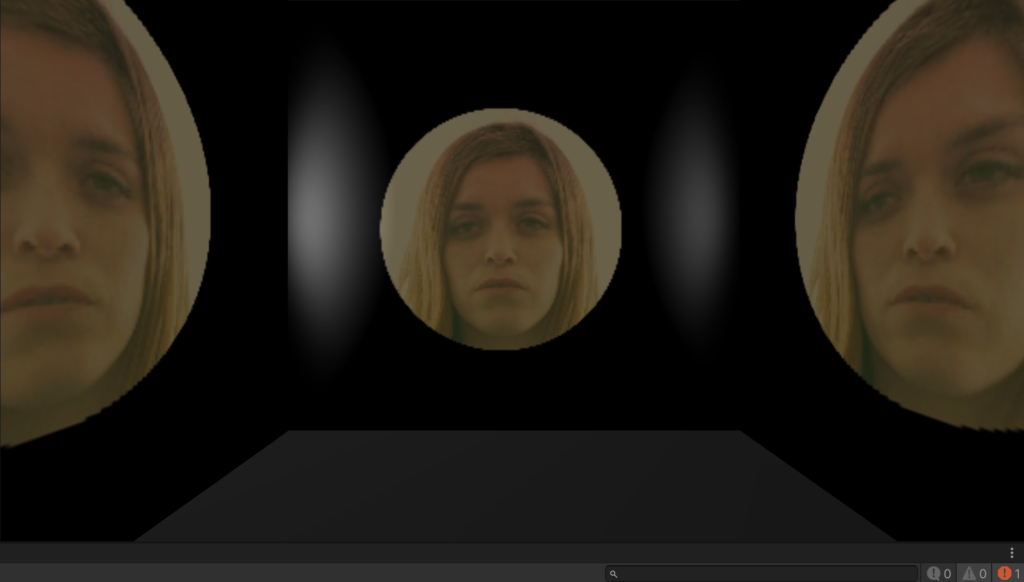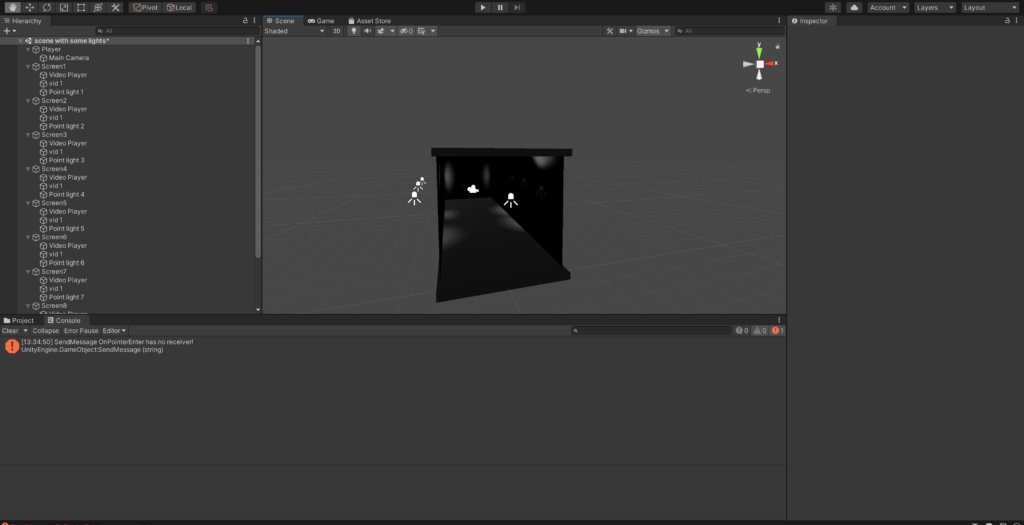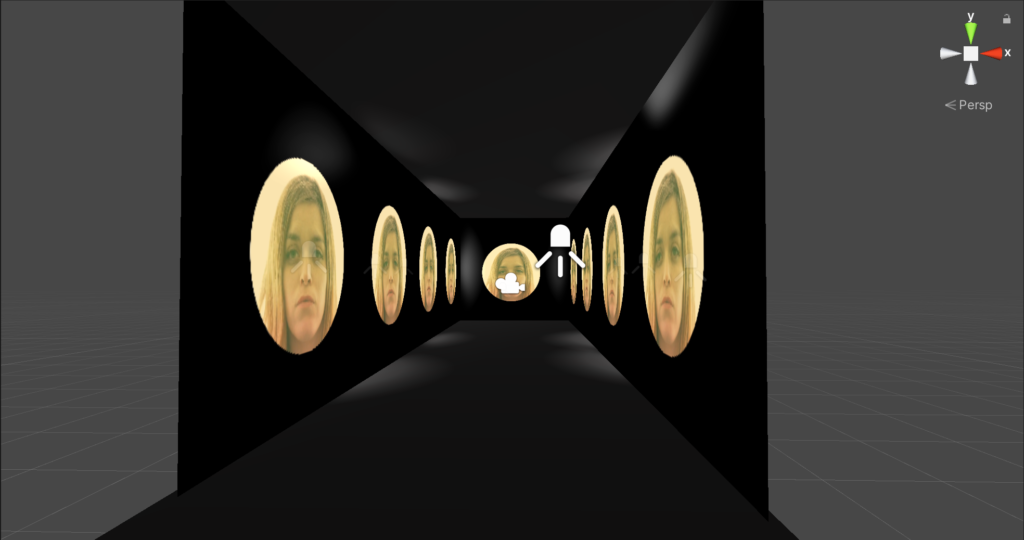Peter Bathurst
is a cinematographer first, however he has recently been exploring the use of existing media and new media as a way of becoming properly engaged with the experience.
Subjective Truth and the Consensus for Immersion Within the Photoreal.
His most recent work in reflection to this is a film and VR experience called Gerstl’s Ghost. Richard Gerstl was an Austrian painter known for his expressive style and psychological concepts. As well as for his last self-portrait prior to his violent suicide of both hanging and stabbing himself. The choice of naming the expanded film Gerstl’s Ghost therefore brings a lot of disturbing and twisted connotations. Considering Peter’s focus is on truth, I can only assume that the question that his film asks and explores concerns the truth of existence.
This article informs us that suicide was very common in the 1900s and it seems as if artists were using tragedy as a memorable exit which would being them fame after death. This notion also made me consider the movie Inception (2010, Christopher Nolan) and the way that reality is challenged. Specifically Mal’s Death scene were the character Mal believes she is stuck in the wrong reality in a way, she is convinced that if she jumps out the window she will make up in her authentic and truthful life, where her real children are. Similarly to this predicament of what is real in Inception, the aim of Gerstl’s Ghost is to investigate the architecture of narrative truth. Truth as a key trigger for immersion. Visual Fidelity/ Truth through the photo real.
Peter also wanted to make a note on the difference between Photo Real VS Real
For him, Real and Truth are entirely subjective and perceptual. But there is a point where there is a consensus for people of agreeing on some sort of truth. This hard reality is however almost irrelevant in comparison to the emotional truth. Sometimes we use certain technology just to work in a certain medium and experiment and see what the medium can do or what you can do with the medium, it doesn’t necessarily have to be the right choice and it definitely doesn’t have to be the best technology but all depends on the reasons of using it. I am actually often asked why I use digital film as a medium and I am not sure I have yet a definite, truthful and authentic answer. I would in fact love to explore analog film, as there is something about the materiality of it that is just pleasing. I also imagine for the hands on process also to feel more personal and intimate.
further thoughts.
One term which came up that was definitely a turning point in the project that I would like to create for this module is the suggestible human: someone who is inclined to agree with the suggestions of others. For instance one can recall an event through connecting their memories with someone else’s suggestions which might create an untruthful recollection. It is also said for a person experiencing intense emotions to be more vulnerable to this suggestibility. What I interpret from this is the question of whether a fact which is commonly known and accepted matters more or how something makes you feel and how you experience something in yourself . Somewhat similar idea to the one of affordances that Peter Burr introduced me to. It as well begs the question of whether what society accepts as the norm is the right or truthful way or whether what we as individuals accept as our reality.
I would aim for the piece that I create to explore this notion of subjective reality as the more factual and truthful one. I would like it to be open to the interpretation to each individual experiencing it as well as simulate some sort of neutral space which allows for this wonder of thought within a perceptive reality. The notion of perception of space has been in fact been explored since the very first week of Aesthetics and Practice and so I believe I have got a good understanding of how space can be interpreted and manipulated through words such as Georges Perecs text of Species and Spaces as well as through software such as Madmapper introduced to us in our projection mapping workshop. Space in itself seems to be rather irrelevant without perception, without other factors added to it, whether it is objects or memories. In fact negative space holds much deeper meaning to it than space itself. For instance, Sarah McDonald work uses the manipulation of space, often focusing on negative space, as a way of creating illusion and challenging the viewers perception of space. Could the negative space be a sort of abstract reflection of space as we know it? We don’t tend to notice negative space unless provoked, yet to me it has much more to it than space does. It exists, but in a way in the back of our mind, possibly subconsciously leading us to have a certain perspective to out view. In many ways negative space can also be interpreted as a neutral space.
further reading.
Tall Ships – Gary Hill’s Projective Installations
Number 2 : George Quasha and Charles Stein
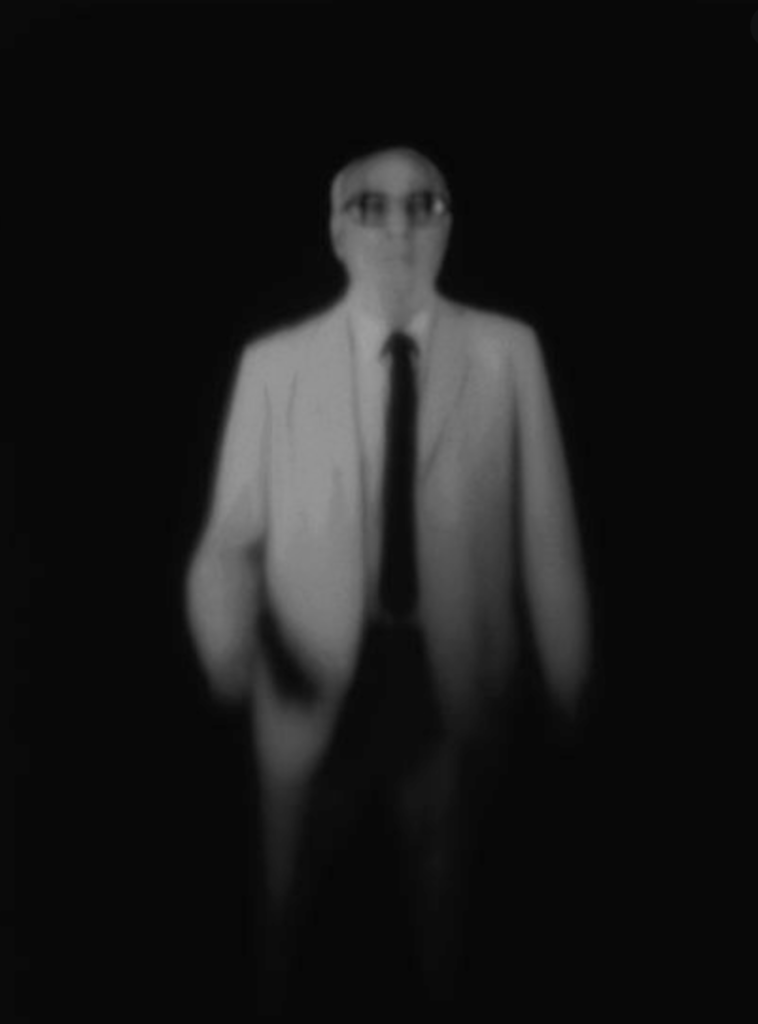
“They come forward as if to make contact.
Only there’s no contact.”
This piece has interactive triggering which means that when you walk past a certain screen the video within it gets a message that it has to move onto the next stage which initiates the character you see in the distance to start walking toward you until it becomes life size. This idea of a near contact occurrence is what interested me most. An unfamiliar digitised being walking toward you as if they are about to ask for directions or the time, but suddenly they just stand still. Even as a viewer I would expect some sort of performance, a monologue or anything to happen really, but instead there is just stillness and silence. Until you walk away and then they just walk away with you.
The near contact also creates some sort of intimacy and closeness, which might provoke empathy for this character who seems a prisoner to the screen, unable to talk or gesture what is wrong. Because, to me, the silence and the walk of confrontation are a suggestion of something hidden and unwanted. Could it be the characters or some sort of reflection of the viewer they represent? The lack of verbal or visual response when they have reached life size form leaves room for the viewer to make their own interpretations, which will most likely be very biased on their experiences or thoughts in that moment. Could it be these ghostly figures are in fact confronting the viewer and challenging them to reflect on their being?
In chapter Being on the Verge the psychological is also considered. It explores this in-between state or the almost stage of meeting this fleeting figures. This inability to complete the process which we are so used to in our daily life, the one of meeting someone, almost works like a generator for thoughts and emotions. The viewer might get anxious from the proximity and silence, or they might get frustrated whilst waiting for something to happen visually on screen, they might also feel concerned or uncertain of whether they are not experiencing the piece in “the correct” way due to the lack of movement. Either way the lack of _______ , or this in-between state provokes thoughts of uncertainty and self-awareness which as previously considered opens up that same door of unintentionally self absorbed assumptions, subjective thoughts and truths.
Light Experiments.
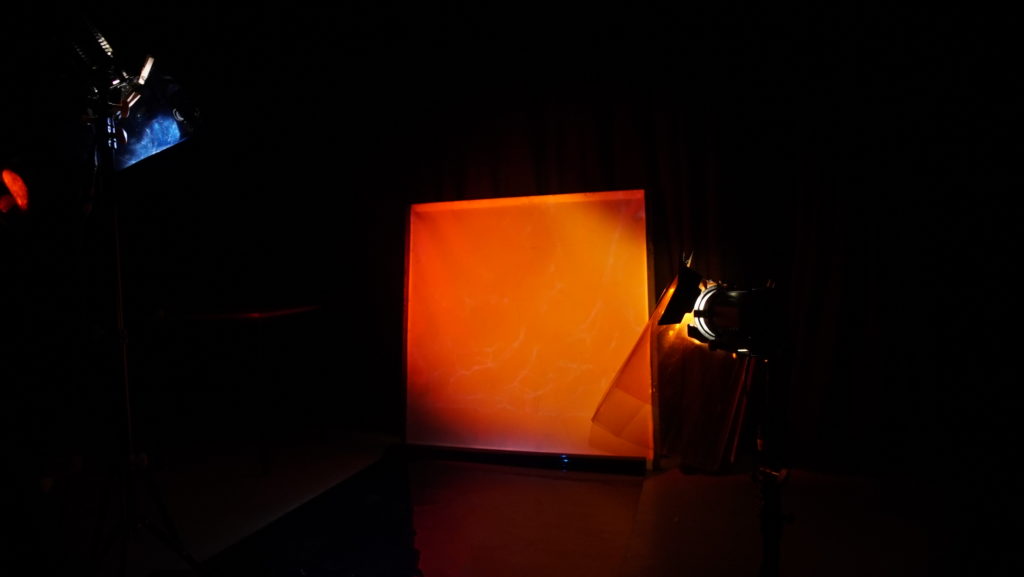
As a reaction to Peter Bathurst’s Expanded Cinema piece and question of what is real and authentic I decided to do a few experiments with light and coloured overlays. I started by booking one of the Film Studios along with some equipment such as 3 dedo lights, a gel location pack of colour overlays, the a7s Sony and a couple lenses.
After sorting out the basics. I thought about what exactly I am looking to achieve. I wanted to manipulate light and possibly manipulate space into something that doesn’t look or seem real. I thought that I would be able to achieve that through the use of a variety of reflective surfaces. And so I broke down some different types of glass. Some which were very thin , fragile, had colour, which was almost holographic, and relief. Others which were thicker and of no colour. I also got some different foils and found some transparent vinyl like fabrics of different colours in the film studio which I also used.
The photographs seen above are of the initial experiments of one of the set ups. The last photograph is of an experiment where I was looking for some sea like qualities. I wanted to focus on using the colour blue because of it being associated with tranquillity. I was also using the transparent vinyl like fabric to create these sort of patterns and essentially manipulate the light. I also became rather lost mid way through experiments. What I had imagined in my head was not becoming reality and it was a frustrating process. I suddenly became unaware of what I was aiming to achieve or rather what is the point in manipulating light when it is not doing what I need it to do. Changing the perception of the space I am in. The patterns were interesting, sure. But did they have any further purpose?
I went back to original set up. Placed a transparent navy vinyl over onto the floor, whilst overloading the frame with intense orange light projected through the dedo lights and an overwhelming amount of overlays onto them. I was getting some slimy and disturbing qualities with this set up. I focused onto the fabric on the floor and its reflective properties, moving it around in the motion of waves. It was the first experiment so far which made some sense and shed some light into one aspect of the reality of the project. It gave these qualities of infinite space which I didn’t realise I needed to explore.
The other two experiments seen below, Light Experiment 2 and Light Experiment 2 Solarized, were much more cheerful through their vibrancy. There was some sort of loss of perception of ones surrounding when looking into the dancing colours. Their movement and relationship to each other have this factor of drawing ones attention in and maybe zoning out. I guess in a way I do want for the piece that I make to make people zone out. Go to his mental place of nothingness, maybe have some thoughts or maybe not, maybe have them consciously or subconsciously. Maybe take it a moment at a time and simply experience a space which forces ones mind to exit the reality of being in a physical space and enter the mental space within themselves. However I am not convinced that these vibrant colours and the vast variety of them is the right choice. That is another thing to consider. Colour.
The below are video recordings, which can be accessed by clicking on the image. Light Experiment 1 also has a sonic element created by Mateo Shefford.
Angela McArthur
She approaches her work in a variety of ways. The main way being from a perspective of intersectional feminism. What she means by that is that gender is an area of oppression, which often intersects with other areas of oppression. Therefore, if you’re fighting to rebalance things in gender then you’re also fighting other ways of oppression, such as within race, class and etc. When it comes to the process of her work she is very set on taking 1 thing that she definitely wants to realise and then she adds onto it and works around this 1 item. She compares that process to how she makes up an outfit, she chooses one item, such as a top and builds the rest of the outfit around it. She doesn’t think that this is the most proactive way, however it challenges her to not only stick with what she knows she can do, but to focus on what she can imagine as well.
It’s through making work that she gets to know herself and start to recognize parts of herself also in relationship to others. Angela is influences by the psychology which focuses on the idea that our sense of self is based around the relationship to the other. We don’t have a sense of self without other. How she explored that within her work is mainly by insuring that her work has some sort of interactive element, is in nature of involving others and kills your ego. Giving others a voice, exploring relationship to others.
Angela’s work has a big performative nature. For instance her work for the Transform Trauma (2016) event in Shoreditch was essentially what I would consider to be VJing, a real time visual performance to go along with her spatial sound.
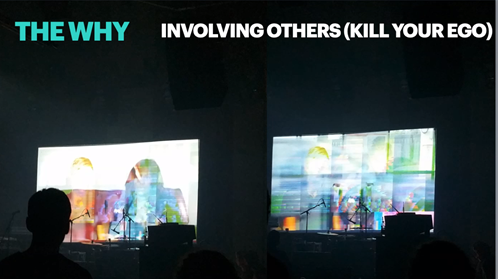
Transform Trauma was an Auidovisual installation using surround sound to raise awareness about trauma being the biggest cause of death for people under 40 in London. It was performed live at the event in collaboration with Barts Charity. More information on the even can be found here.
Angela shared the stories of some of the people who influenced her piece in order to highlight the depth of the issue. One woman was caught in cross fire and shot in her chest. A man was cycling in a round about and somebody took him out and he end up being in a coma. The aim of this event was to raise awareness of such events and the trauma they bring, physically and emotionally. It was also a charitable cause based on donations. The organisers however didn’t want anything too dark visually wise, instead they were looking to transform trauma in some way.
Another piece of Angela’s which I found intriguing was Labourer Others, exhibited at Signale Festical, Graz 2019. It is an audio-visual spatial sound work with video, which aims to humanise, create empathy for, and give nuance to the lives of sex workers in New York. This sort of activist work is definitely what I believe for one of the purposes of art to be. Sex workers all over the world are still dehumanised and degraded by society with the belief that the work the do is somehow worthless and disgusting compared to any other job. This unfortunately are only constructs that society has build and expectation that society has. This in a way bring me back to term of affordances introduced by Peter Burr. What is considered to be the right type of work somehow excludes the industry of sex work. However if we look at it from a purely economical point of view, work is a service, whether it be mental or physical, and for that service a payment is made. That is the definition of work as an office worker as well as a sex worker. To conclude, it was great to see a female artist take on this topic and represent these “othered voices”.
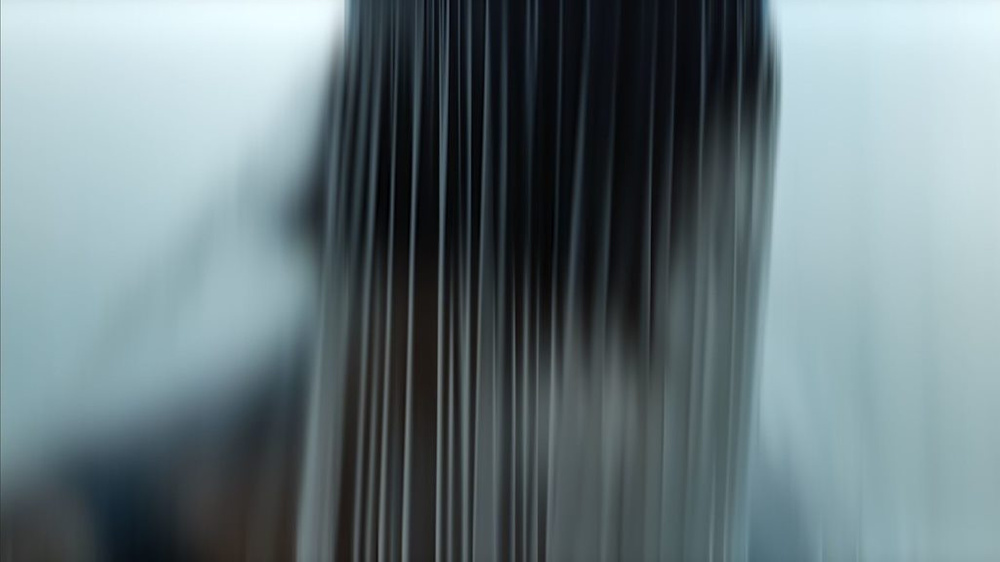
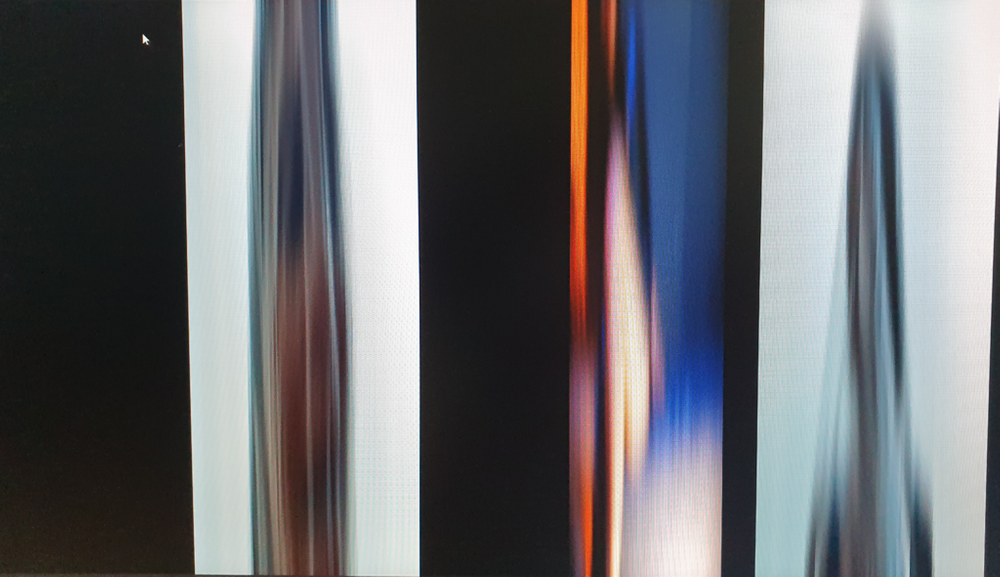
Whilst trying to find more information of the psychology which teaches that the self can’t exist without others I came across this philosophical idea of solipsism. Solipsism teaches that although the existence of out physicality as humans can be questioned through notions simulations and different realities. Our mind is in definite existence. Although anything outside of the mind is in question, it is uncertain and this physical reality we see and touch might not exist outside of our mind. I found that this notion that solipsism teaches is in fact very similar to the concept of the piece that I am aiming to create. I have already established that I am looking to create a neutral space and also to question perception reality of the physical existence of space and things within it, things that occupy it. The way I interpret solipsism in relation to the piece I would like to create is that it focuses very much on the mind and psychological and mental space as potentially a more truthful one to our perceptive reality, rather than the physicality of existence. It also will aim to a achieve such a mindset through light and colour. I will further explored creating a psychological space through light in the development stages of the piece. As well as explore colour.
Projection Experiments
I started both of these experiments with the idea of focusing on a silhouette as previously mentioned I was not interested in the physicality of the human body and thought that removing it from the equation would be the right way forward. However due to my lack of equipment a silhouette was not captured, but instead the shadow of the model/actor. Whilst getting on with the experiments I noticed that the shadow brought on darkness and a lack of depth. The lights and colours still contributed to the creation of some sort of abstract place but not quite a neutral space and not quite as successful in achieving an illusion of this space being psychological rather than a room.
Another conclusion I came to within the projection of these experiments was that I do need the subject to be in the shot because the illumination of the light onto their physical body creates some sort of hypnotic element, almost like the mind of the character is detached from their body. Not quite an out of body experience but possibly a feeling on unreality. Bathing the body of the character in light also brings in these symbolisms of the spiritual and the divine. I would definitely like to explore this aspect of illuminating the character in light and the potential developments of this aspect within the concept of a psychological space created through light.
Jon Weinel
He firstly introduced us to his most recent work called Cyber Dream which is:
- made up of different stages which explore 6 aesthetics.
- visualising rave music and vaporwave. Flythrough a synesthetic dreamscape.
- Inspired also by 90s computer graphics.
- exploring Utopia and Dystopia representations.
We were questioned as to what be believe for altered states of consciousness to be? (ASCs) Jon described them as different experience from the certain general norm. Alert, waking consciousness. ASCs can come through psychosis and other mental illnesses. Dreams, meditations, trance, sensory deprivation, hypnogogic hallucinations ( sleep paralysis), hypnosis.
We also went through a list of typical features of hallucination: Perceptual distortion, Auditory hallucination, Visual trails, Distortions to time perception, Intensification of sensory experience. What interested me the most was sound visualisation. Even though that is a construct made up of two parts, the sound and the visuals, and in fact in springs from the sound, I was more interested in the visual which allows for the construction of special illusory experiences. One example we were given was Early Abstractions by Harry Smith (1946-57) who also he did live projections and improvised performances. Early Abstractions however is intriguing due to its asynchronistic of sound and image as well as the fact that I interpret it as made out of different stages. It is not simply made up of random colours and shapes but it follows some sort of emotional narrative. The first stage in it is the least intriguing for me in fact. I think it is because both the visual and the sonic are very overcrowded and overwhelming and so it doesn’t really allow for any interpretation or digestion of it.
Whilst the second stage, starting at 8:14mins holds an instant juxtaposing to its predecessor. The visuals are made up of black and white, shapes are floating but it isn’t busy, it isn’t quick. It is in fact relaxing and in a way hypnotic to experience, both the audio and the visual really attract my attention through some sort of devout and ethereal qualities they project. The third stage once again shifts the perspective and invites us into a much darker, much more sinister realm. Both through the choice of reintroducing a selection of colours, as well as the choice of shapes and positioning of the which begin to create illusions of space and depth in particular.
Another piece of work which we briefly discussed in this session was the movie Enter the void by Gaspar Noe. The concept of it seems to be executed incredibly from what I had seen in the trailer. The movie follows the notion of a void as a psychological space which only exists spiritually and not physically. This void is entered by the protagonist through visuals of a psychedelic tour of life after death. It is almost as if the character is having an out of body experience.
We further considered experiences, identity and experiential reality. I suppose this term is similar to what I refer to as perceptive reality in my development of a piece for this module however experiential reality in fact might be a more accurate term for the purpose of what I am exploring. Experiential reality is essentially one that is based off of the perception of the person, I am particularly interested in the individuality of it and how events can be experienced entirely differently from a perspective of psychological states. Ones that might be provoked by mental illness such as sound or visual hallucination.
When it comes to the experience of things which are not physical we have to consider illustration & representation vs provoking or a simulacra? Meaning that the the aim of the piece is to create a sort of simulation, rather than a representation, of an actual experience, or maybe at least provoke a state of mind which might be associated with the experience that is being explored.
What is the aim?
Possibly to take on ephemeral fleeting imaginary things and make them more concrete.
Synesthetic Overdrive, Inner Sound (chapter 6)
- avant-garde films from the surrealist movement and the ‘trance film’ genre.
Using the medium of film to invoke the irrationality of dreams or the unconscious according to the Freudian view. These films influenced the development of what Sitney (1979, p.21) referred to as the ‘trance film’, a genre that explores the lives of somnambulists, ritual initiates, or the possessed.
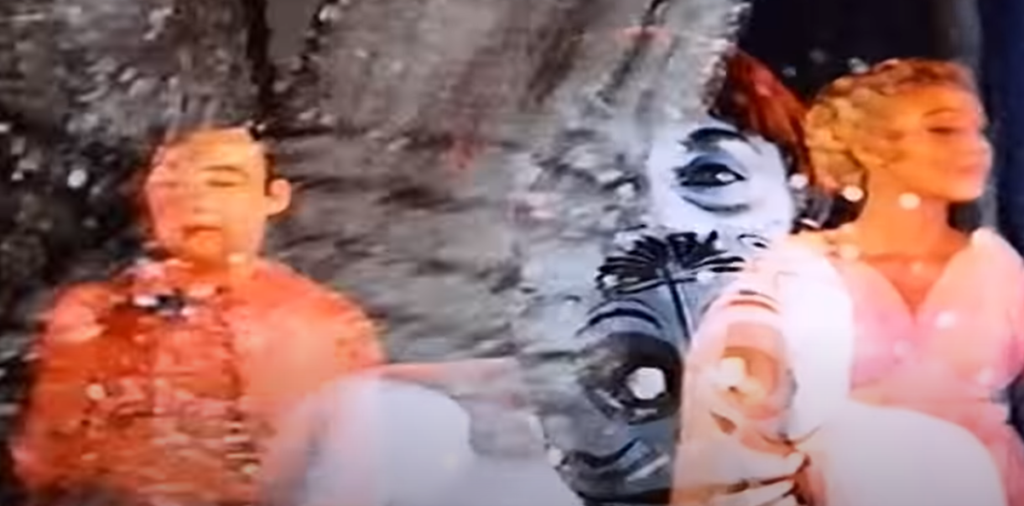
Examples: Opening sequence from Luis Bunuel and Salvador Dali’s Un Chien Andalou (1929) > plays upon the viewer’s expectation of visual continuity, while denying any logical narrative. Inducing and experience of heightened emotion and irrationality that mirrors that of the unconscious. Also, many films of David Lynch such as Blue Velvet, 1986 can be an example of avant-garde surrealist films. Kenneth Anger’s Inauguration of the Pleasure Dome (1954) / as seen on the left/ include direct references to drug use and uses innovative techniques to represent visual hallucinations. 38 -minute narrative that describes an occult ritual. * superimposed images
The text also goes into exploring psychedelic lightshows of the 1960s
For example, Andy Warhol’s notorious Exploding Plastic Inevitable (1966–1967) shows provided multisensory experiences involving projections, strobe lights, dancers, and live music by the Velvet Underground ( Joseph, 2002). The performances were highly kinetic aiming at sensory overload. Such as a loud TV or a crowded room . This goes back to the idea of finding a fine line between anxiety or depressive states and euphoria. A crowded room instantly links to a concert which could be exciting but also raise your anxiety levels. I suppose this has to do with a variety of sensory experiences which can be very powerful. There even exists a religious practice within Sufism which is a belief branch of Islam. The practices of people called Whirling Dervishes who overload their senses by spinning or simply using put rotation, can be a way of imagery seeking to alter consciousness through the sense.
One particular artist within the section of visual music films which stood out for me was.
James Whitney.
is a filmmaker who stood out for me within the examples of visual. His practise focused on abstract cinema.
His work explores light and sound that reflect internal aspects of consciousness and it has been described as the following, in relation to his film Yantra (1957):
“The film consists of flickering colour changes and various expanding and contracting clouds, fountains, and geometrical dot formations providing a means through which to communicate concepts of meditation that are otherwise resistant to verbal explanation”
Moritz, 1985
The kinetic energy within Yantra is overwhelming and I suppose this overwhelming of the senses is what initially brings the potential of inducing a meditative state. At first it might seem like chaos but slow realisation creeps in that in fact every single movement and change is very carefully considered, almost choreographed. It includes flickers, inversions, harmonious movements as well as more imbalanced visuals. As he has used film to produce Yantra, I also have to consider the materiality in the process and the conscious choices made which cannot be erased, copied or edited in any way in the same way as digital. This proves for irregularity in some motions, but also leaves space for the imagination and experiential reality based on the individual.
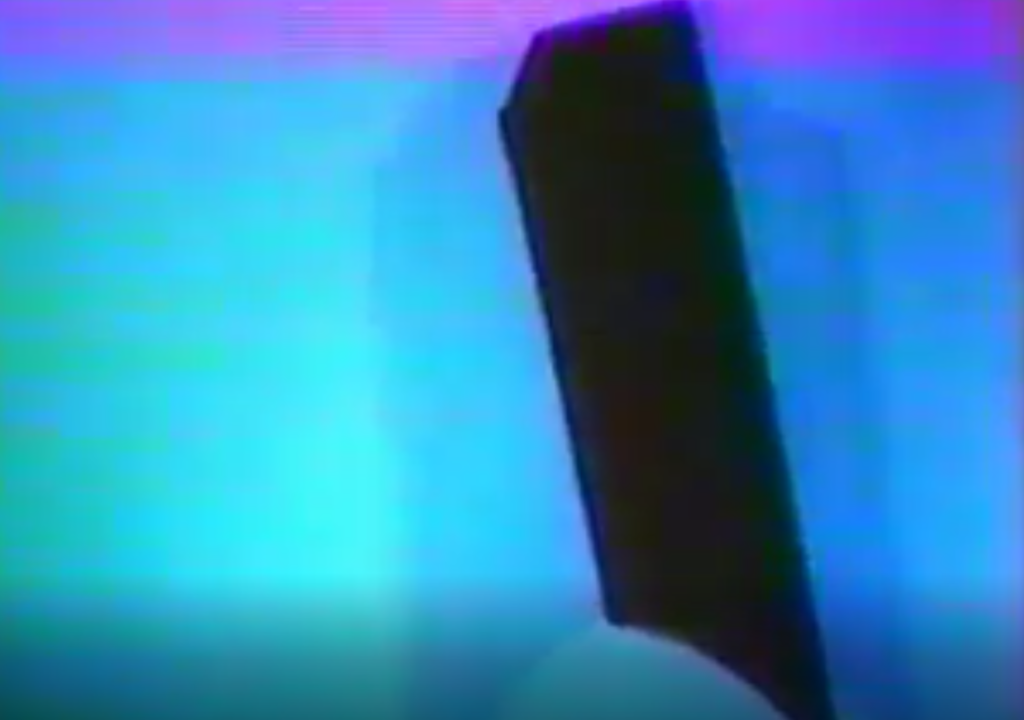
Five Film by John and James Whitney (1943) is another piece of his which I find hypnotising. It definitely holds more rigidity both in its restrained figures as well as in its ability to situate the ethereal on a visual plain. The flickering is an aspect of the piece which holds vagueness as I am not quite sure if it intentional. Intentional or not the flicker add a sort of temporality, not in the sense of the length of the short film but temporality to the layers of the frames, and what exists in between what we are able to see with the frames per second and spectrum that our brains perceive the visual. I see the flicker as almost like a portal in between the physical and and psychological. I would like to incorporate this quality into my work too.
Overall, similarly to the examples seen above, I am looking to use light and colour, but also incorporate space to communicate a psychological place which cannot be verbally explained.
The movie eXistenZ also came up as a potential concept in communicating alternate realities as well as psychological space as it exists in ones mind and not in their physical reality. The way that this psychological space is accesses in the movie is through a virtual reality game. Nowadays VR is also used as a way of escapism, there are meditation spaces such as the VR experience called Calm which is introduced by oculus and it situates you in different environment such as woodlands or a seashore, combined with calming sound of rain or waves. I would like to achieve this psychological space and way of escapism however, without the use of VR. I believe that using VR to create this sort of environment in a way defeats the purpose due to the digital construct of a world which we are aware exists in pixels. Whilst inducing a certain state of mind through altering physical space happens within the mind of the individual situated in this experiencing.
Furthermore eXistenZ doesn’t incorporate a theme of a neutral space that I am looking to create. I though about some other movies which have portrayed a mental space and I came across this repeated representation of what can be described as that void or a neutral space. The series Stranger Things uses a void to allow a supernatural character to access other realms of reality and explore psychological spaces of hers or other’s subconscious. The movie Under the Skin , also uses a void as a way of portraying the transcendent and intangible part of an alien. In this case the void also holds other connotations and is highly sexualised however this in fact more to do with the representation of the main character and their aim of being on earth, rather than the properties of their existence alone.
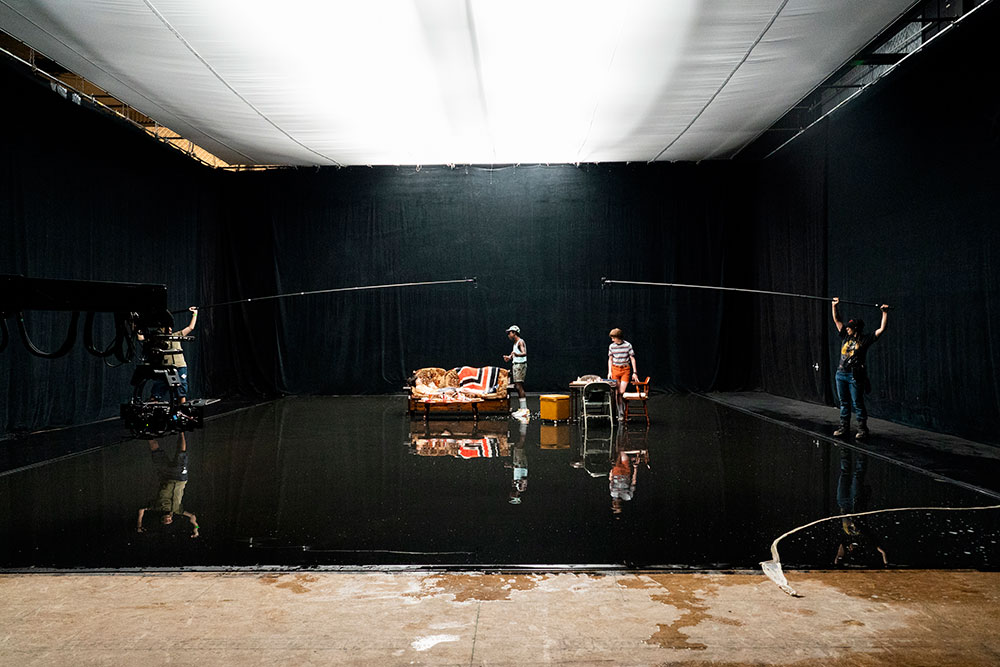
From here I would like to carry on and explore the total loss of depth of the structuring of these psychological spaces. on the left is an image of how the void in Stranger Things was created. The effect of this ethereal plane was achieved with surrounding the area of the scene with black curtains and adding a thin layer of water into a very shallow pool for the reflective properties of it. I think the water also contributes to the way that sound is communicated in convincing the viewer of this abstract space.
(article referenced on image)
However, instead of achieving this endless space through darkness I would like to configure the intangible through light.
VR Experiment.
This weeks experiment focused on the construction of a VR environment as suggested by Jon Weinel’s workshop which we had access to via moodle.
I was looking to transforming my latest piece called Expressions into a VR experience. The reason being that the piece was meant to be an installation however due to the Covid19 pandemic it is still not in the cards to actually put together an exhibition where I would be able to physically create this installation. I had already created a sort of virtual sketch of it through the use of Premier Pro and Basic 3D, however I thought I could use the opportunity of this workshop to attempt the creation of a virtual reality scene which people could explore, such as through my portfolio where I would like to incorporate this piece. What I found was that as simple as it might seem visually, the mechanics of setting up such a scene are much more time consuming than anticipated. I have some basic knowledge of Unity and VR already and so I though I’d only need to set up the VR aspect, add a few walls to create the gallery and find a way of attaching the video as material to this walls or quads.
Apart from the consumption of time in setting up the space, the precision required in timing each video was also very challenging. I edited the videos within Premiere Pro, where I left a timeline of a black background in the beginning for the amount of time that it takes for the video to start appearing in relation to the rest. Despite timing that through calculations of what would be the best intervals as well as positioning (as in which plain would appear next) the up to date version has not yet got to where I would like it to be.
Another aspect I thought about was that in a real environment there would be some sort of illumination created through the light emitted from the screens or projectors. I started adding external lights to mimic the environment, however that proved to be very tricky. I think the issue was that I didn’t have an accurate perception of where the light wold be reflected, whilst Unity is quite smart in assuming light within the shape it is entrapped in. Due to the shape being so enclosed and my perception being possibly wrong, the positioning of the light just didn’t look quite right.
Above are some references to the work in process and screengrabs of Unity in action. Apart from Jon’s workshop, I also looked into some extra tutorials such as these ones: 1, 2 and 3
Feel free to download the most recent apk.file which is still not in its final version. It is only compatible with android mobile devices currently and also needs some simple VR glasses in order to enter the Virtual Reality.
Download file here
Blade Runner
1982
In this session we discussed quite a few different concepts, concerns and questions concerning the movie. One specific concern being the scene where the main character, Rick Deckard, throws himself onto Rachael. It was rather uncomfortable to watch and I could even go as far as calling it a scene glorifying the idea that men are above consent. It could also be considered that Deckard felt the right to do that because Rachael is a robot. However she is portrayed as a very advanced robot, one that potentially even has experienced feelings or emotions. Suddenly he starts questioning his morals, in a yet again questionable way by ordering her to consent to him. Saying “Tell me to kiss you”. Finally we questioned whether this and other bad representations of sexualisation are a way of showing what we hope reality does not come to. based on the fact that the film is representing a dystopian future.
Another concept within the film which interested me was the question of robots and their potential development and evolution into a human like state. Blade Runner presents a dystopian future where robots, aka replicants, are essentially used like slaves and are instantly terminated where nay feelings or emotions are detected. The question I ask myself is what really distinguishes the replicants from humans once they reach and emotional level of awareness? Isn’t the 4 year life span rather immoral and can it be considered as murder. And If the AIs have developed to a human level, why can’t humans just let them live? There has always been this scare factor of robots taking over the world and the idea if they are not treated like slaves they will bring doom to everyone and everything. However if robots are reaching emotionality on a human level, then wouldn’t they simply act human. As much as robots are seen as machines full of right answers, predictions and calculations, when emotion or feeling comes into the equation, everything shifts. Hence, the replicas portrayed in Blade Runner would simply behave like humans, therefore what makes their life less worthy of the human one?
Everything suggested in Blade Runner is hypothetical and sci-fi. However technology has developed since the first movie and some of these hypothesis are moving close to reality. Maybe not so much the dystopian future, yet. But for instance, Hanson Robotics are a company which has created a robot, Sophia, that has developed mannerisms over time and is starting to behave more like a human. They say that Sophia knows how to mimic emotion, which is not experiencing it, but it is an interesting development and an example of the potential.
Some comparisons to Black Mirror were made in relation to genre of dystopian future, the film noir style, which weirdly looks back into the 30s instead of looking into the future, through the dark alley ways, shadows and constant rain makes, as well as the dark, apocalyptic aesthetic. The sci-fi series West World was also mentioned, which takes a theme park to the extreme of a dystopia. It covers themes such as immersion, hyperrealism and escapism. I personally have not watched this series, however the word escapism once again caught my attention. I have previously explored this term because I feel like it is very relevant to the theme that my final piece for this project is being led towards. Escapism is something that probably everyone does in a form of ‘zoning out’, nowadays there are of course other more intended ways such as through VR, however I am personally more interested in the unintentional and the subconscious tendency of people entering a non physical world as a way of escaping from their daily life. There are many other forms of escapism however the one that already exists within oneself is ironically the most real one. It might not exist in our perception of our physical surrounding, in different spaces and places that we are situated in or are visiting, however it is somewhere that can be anywhere.
Bringing it All Together
This session was dedicated to considering how Sarah Macdonald and Jim Hobbs perceive our works and what artist they find resonate with our concepts. In regards to our divided themes within Aesthetic and Practice Jim and Sarah suggested that the following are most relevant ones:
- Critical forms of Observation
- Materiality and Process
- Imagined Worlds
Louise Bourgeois reflection
Louise Bourgeois is best know for her large scale sculptures and installation art. Both her work and the way she speaks about it is very forthright and unapologetic . For instance this abstract from Louise Bourgeois: Destruction of the Father/Reconstruction of the Father: Writings and Interviews 1923 – 1997, Self Expression is Sacred and Fatal, 54
“Self-expression is sacred and fatal. It’s a necessity. Sublimation is a gift, a stroke of luck. One has nothing to do with the other. I am saying in my sculpture today what I could not make out in the past. It was fear that kept me from understanding. Fear is the pits. It paralyzes you. My sculpture allows me to re-experience the fear, to give it a physicality so I am able to hack away at it. Fear becomes a manageable reality. Sculpture allows me to re-experience the past, to see the past in its objective, realistic proportion. Fear is a passive state. The goal is to be active and take control. The move is from the passive to the active. If the past is not negated in the present, you do not live. You go through the emotions like a zombie, and life passes you by. Since the fears of the past were connected with the functions of the body, they reappear through the body. For me, sculpture is the body. My body is my sculpture.“
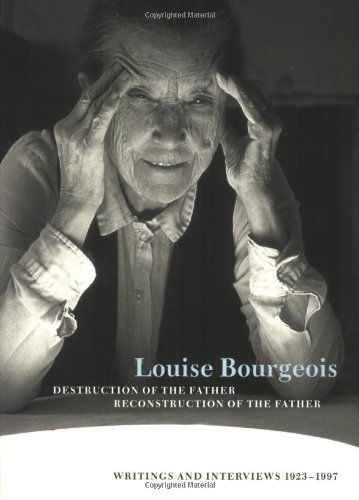
There were 74 collected statements of Bourgeois’ , however this particular one, number 54, resonated most with my current work. The idea of giving something physicality as well as the passiveness that she talks about are only a couple aspects that I have found myself sucked into. Both Expressions as well as the concept for the Aesthetics and Practice piece which has been building up, were initiated from this need of communicating a non existent psychological space or mindset through the use of visual imagery. Also the way I interpret the passiveness she suggests is through the lack of narrative in my work as well as the lack of acting or even movement from the character/ actor. They very much become this body used as a means of communication for the environment they reside in which is almost like a projection of their essence.
Meanwhile, Jim Hobbs describes Expressions as an intense form of observation in which we find expression which hover between the uncanny, the melancholy and the euphoric. These in between places makes us feel uncomfortable because we can’t define what exactly we are looking at. This approach of observation and tweaking it , that allows us to exist in between these states. He also notes that when we place people in work, like I have in Expressions, we can create empathetic relationships with them.
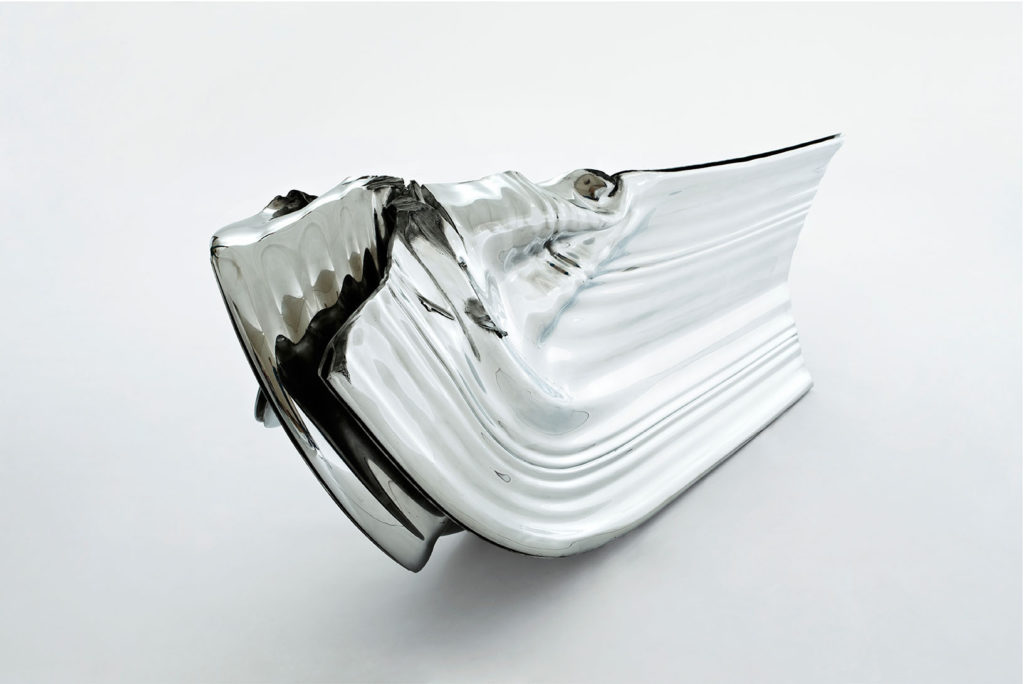
Jim also considers the materiality and process of my work so far. The use of time as material which we can stretch and shape and alter. He introduces us to Thomas Heatherwick is an artist who creates furniture pieces with aluminium called extrusions. He was trying to find the right process of creating the sculptures he imagined through extrusion. He uses the first object that comes out which is usually a piece that people throw away, as the first piece is considered to not be any good.
The way Heatherwick’s sculptures are stretched reminds Jim about these in between places and states explored in Expressions and my process of making it. Reality is different depending on our location: bend, break, form, mould, shatter, pull it in ways which questions our perception of reality. It is not to say it is not reality, but just a certain perception. Work allows us to be a voyeur. We are allowed to examine things which we can’t in real time. The sickly yellow light makes us hyper aware of us staring at them (the actress in video) and makes us feel uncomfortable, yet the work is unapologetic about it.
